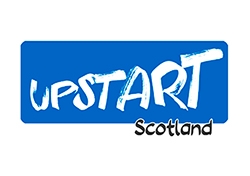Here’s the text of Upstart’s response to the National Discussion. We urge everyone shares our aims to submit an individual response via this link: https://consult.gov.scot/learning-directorate/national-discussion-on-education/consultation/intro/
Please don’t be put off by the length and detail of the text below. You can be as short and sweet as you like, you don’t need to answer all the questions and you certainly don’t need to agree with us (although we do hope you’ll agree about the need for a kindergarten stage). We’re hoping the Scottish government will take note of responses to the National Discussion so the more support they hear for a kindergarten stage the better!
- What kind of education will be needed by children and young people in Scotland in the future?
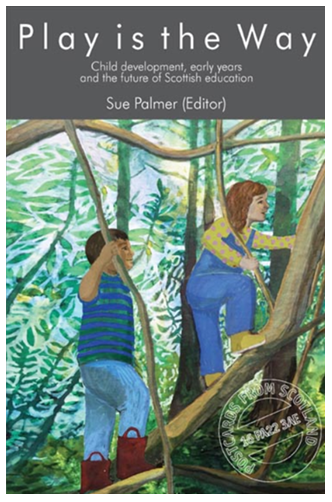 Our children and young people will need an education that – from the very beginning – puts the needs of the learner at the centre, ensuring that every child has the best possible chance of becoming a confident individual, successful learner, responsible citizen and effective contributor.
Our children and young people will need an education that – from the very beginning – puts the needs of the learner at the centre, ensuring that every child has the best possible chance of becoming a confident individual, successful learner, responsible citizen and effective contributor.
It would therefore have to be an education based on the levellest possible educational playing field, which in Scotland would require SIGNIFICANT CULTURE CHANGE.
For the last 150 years we have disadvantaged a very large number of children every year by insisting they start school – and the three Rs – at age four or five. Although Curriculum for Excellence describes an ‘early level’ (three to six) with a more developmentally-appropriate approach than had been the case in the past, schools have still continued teaching of literacy and numeracy skills in P1.
Parents and the general public expect it. National government wants to assess children’s competence in these skills. Local government wants evidence of children’s progress in the three Rs across the P1 year. Literacy and numeracy therefore become the focus of schooling at an age when a great many children (particularly those from disadvantaged homes) are not developmentally ‘ready’ to understand and fully internalise the relevant concepts, and are often physically incapable of forming letters and numbers.
Some children are turned off school and embark on a lifetime of ‘behavioural problems’. Others *cope* but the foundations on which their learning is based are shaky. As time goes on, their educational performance suffers as, very often, does their mental health.
The kind of education Scotland’s children will need in the future must therefore be firmly founded on the science of early child development, and especially the huge significance of active, social, outdoor play for all aspects of health and development during early childhood (birth to eight). Since twenty-first century culture no longer permits young children the freedom to play outdoors for long periods, we must change our early educational provision to ensure that play – along with sensitive, developmentally-appropriate adult support – is central to the learning process until children are at least six, preferably seven.
- How do we make that a reality?
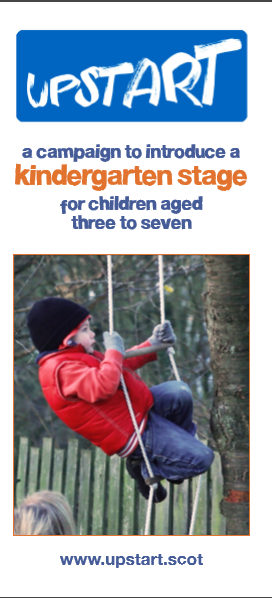 To make this a reality we raise the school starting age to six or seven and introduce a statutory kindergarten stage (similar to those in the Nordic countries) concentrating on wellbeing and healthy child development – i.e. physical, social, emotional and cognitive development.
To make this a reality we raise the school starting age to six or seven and introduce a statutory kindergarten stage (similar to those in the Nordic countries) concentrating on wellbeing and healthy child development – i.e. physical, social, emotional and cognitive development.
This would involve relationship-centred, play-based educational provision – as often as possible outdoors and in nature – in which each child is supported as appropriate to his/her own developmental level.
There would be no age-related benchmarks or standardised assessment of literacy and numeracy skills during the kindergarten stage but the environment would be ‘literacy-rich’ (plenty of stories, songs and rhymes, drama, environmental print, mark-making etc.) and ‘maths-rich’ (plenty of opportunities for real-life problem-solving, building, experimenting and counting). This would ensure that ALL children have the time and rich experiences to help them develop the strong socio-emotional, physical and cognitive foundations that underpin later success in the three Rs.
This change would|also require an early years workforce with dedicated staff who continually engage with high quality CPD and have a route to progress within the sector which is valued, respected and rewarded to aid retention. This should be a blended workforce of qualified early years practitioners and primary teachers. It should recognise the importance of skills and experience in working with young children but academic achievement should also be part of the scenario.
- How can every child and young person’s individual needs be supported and addressed in the future?
A rights-focused, relationship-centred, play-based kindergarten stage would set the stage for attention to children’s individual needs, as well as ensuring that as many children as possible are equipped to fulfil their educational potential.
Once children reach the age of six or seven, we should retain the Curriculum for Excellence but strip it back down to the original text (i.e. lose all the extra directions, such as the Experiences and Outcomes, which leave teachers bogged down in bureaucratic detail). Teachers should be trusted to teach and children to learn.
We should also be very clear that academic success is no more valuable than other types of achievement – e.g. practical, creative, artistic and sporting skills; empathy, social skills and contributions to the community; the pursuit of technical/vocational qualifications. There should therefore be less emphasis during secondary education on exam-based courses in traditional academic subjects and more attention to developing the four capacities that underpin Curriculum for Excellence.
There should also be more opportunities throughout the system for outdoor learning and educational projects which engage children/young people with their communities and local environment.
- What is one thing that needs to stay and why?
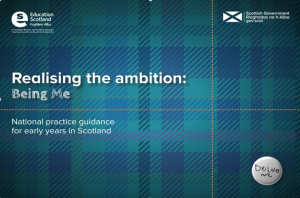 The new practice guidance for early years, ‘Realising the Ambition: Being Me’ (2020), which is based in sound developmental science and could become the ‘curriculum’ for a relationship-centred, play-based kindergarten stage.
The new practice guidance for early years, ‘Realising the Ambition: Being Me’ (2020), which is based in sound developmental science and could become the ‘curriculum’ for a relationship-centred, play-based kindergarten stage.
However, in order for this to happen RtA should be turned into statutory guidance – and the current requirements for literacy and numeracy data at government and local level would have to be removed.
- What are the most important priorities for a future Scottish education system?
Focusing on putting the needs of the learners at the centre from the very beginning, which means that everyone – at all levels within the system – has to recognise the significance of early child development.
At present, what happens in early years settings is seen by most educators as having little relevance to the educational performance of children and young people later in the system. Politicians and press regard ELC as little more than a child-minding service while parents are at work, and Primary 1/2 children are regarded as schoolchildren who can be expected to crack on with the three Rs. This is in direct contradiction of the growing evidence about the profound significance of early childhood experiences and the beneficial effects of high-quality early childhood care and education.
- How can we ensure that everyone involved in education in Scotland has a say in future decisions and actions?
At present, local authorities require teachers to sign a ‘gagging clause’ in their contract of employment. This prevents them from questioning local (and thus often) national policy.
It therefore takes a very brave teacher to question educational policy because they are at risk of losing their job. As long as this culture of control continues, the system will be controlled by a cabal of bureaucrats, policymakers and ‘the education elite’. We need a much more open and democratic system in which teachers can speak out against educational policies with which they do not feel comfortable.
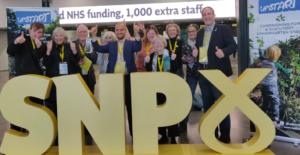 It is also very difficult for parents to challenge the system, particularly at local authority level, which campaigning groups such as Give Them Time have often found extremely obstructive.
It is also very difficult for parents to challenge the system, particularly at local authority level, which campaigning groups such as Give Them Time have often found extremely obstructive.
However, the 2022 SNP Conference overwhelmingly passed Resolution 24 in favour of raising the school starting age and introducing a kindergarten stage for children between three and six. A week later the Scottish Green conference overwhelmingly passed a similar resolution. So perhaps our two ruling parties will start taking a more democratic approach by responding to the wishes of their own membership…
- How can children and young people be cared for and supported in the future? (i.e. physical and mental wellbeing)
By making sure that physical and mental well-being are at the heart of educational policy during children’s most formative years (early childhood- birth to eight) and concentration on well-being and all-round healthy development is not derailed by unnecessarily early attention to academic skills.
And. once children are seven, by keeping the four capacities at the heart of policy, trusting children to learn and teachers to teach and valuing physical, emotional, social and cognitive skills/capacities as least as highly as academic success. Preferably more highly.
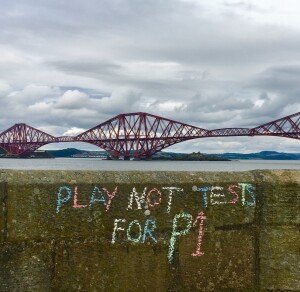 How can the right of every child and young person to have opportunities to develop their full potential be achieved in future?
How can the right of every child and young person to have opportunities to develop their full potential be achieved in future?
See above answers. Also pay attention to UNCRC Article 3 (best interests of the child), Article 6 (the right to development), Article 29 (the right to realise full potential) and Article 31 (the right to play), rather than over-focusing on Article 28 (the right to education).
- How can children and young people be helped to learn about our changing world, so they feel able to positively contribute?
Start in the early years with a relationship-centred, play-based kindergarten stage when children spend as much as time as possible outdoors and in nature.
Then prioritise relationship-centred educational practice, outdoor education and community engagement throughout the system.
And don’t over-focus on academic study and exams.
- Do you have any other comments that you would like to provide about a vision for the future of Scottish Education?
At present, Scottish education is based far too much on control (as indicated by the plethora of bureaucracy, documentation and measurement/accountability procedures, not to mention ‘gagging clauses’).
We need a relationship-centred system based on trust. And this should start from the very beginning by trusting in two well-established developmental essentials – love and play – to lay sound foundations for children’s lifelong learning and well-being.
If you actually read all the way to the end, thank you very much – you deserve a medal. And just in case you’ve forgotten the link to the survey here it is again. PLEASE SEND IN A RESPONSE!

